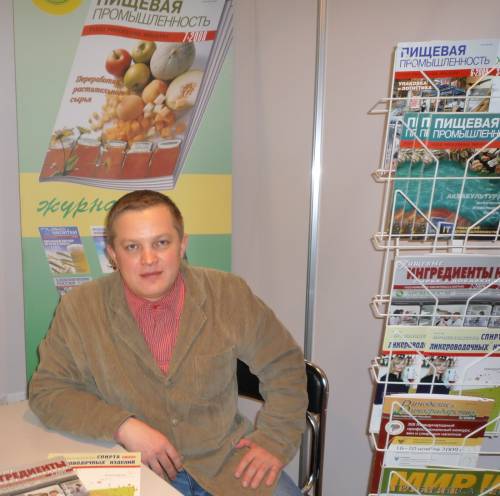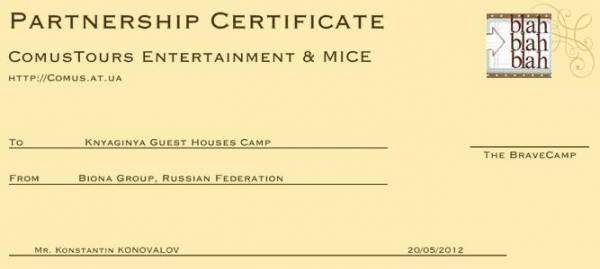Kemerovo |

Mr. Konstantin KONOVALOV
Website http://biona.moy.su
Email Kemal@cloudme.com
Project management
Food technology outsourcing
Product innovation
Business start up & foresight
The global food sector is a complex mixture of agricultural production, food processing, trade and catering industries.
Modern food production is not possible without the use of food additives and flavourings and the industry for such production is growing rapidly along with the requisite scientific development and technology.
As the food industry has developed in Russia it has become necessary to use these modern methods. Recently particular attention has been paid to the introduction of high quality ingredients and additives to increase the volume and variety of products. Specialists in the food industry hope to satisfy consumer demand for healthy, functional foods with the aid of micro-ingredients. It is important that all resources within the food sector are used appropriately to optimise product costs.
BFI - Biona Food Ingredients, has many suggestions and proposals regarding the fulfilment of consumer demands.
I wish you every success in the field of food production management and sales - Konstantin Konovalov, Founder TTT Thesaurus Transfer Technology Consulting Bureau
One of the major reasons potentially good businesses fail is that they are under capitalised. Even a small capital injection can turn a good idea into a successful venture. Not only that, small business people often need advice which isn't always readily accessible.
The extent of a Business Angel's involvement in the investment venture is entirely their choice. This will be one of the criterion we will use when choosing who to introduce.
- A Business Angel may want a lot of involvement in the business in which they invest, others may prefer to be a mentor only.
- Other Business Angels may nominate a business consultant.
- Some Business Angels may invest in several companies, others may focus on one long term project, or just invest in one for a short time, or several over a period of years.

Publishing house FOOD INDUSTRY Moscow,Generala Panfilova, 18, bild 3, 4th floor.

Кемерово - SHORT STORY OF KEMEROVO CITY
A lot of cities have century-long history. 90 years of existence is not a long period but namely in this short period of time a modern city – an administrative center of Kuzbass, big industrial and cultural center of our country appeared instead of Sheglovsk - settlement unknown to the rest of the world.
Earlier it was a small village with no kindergartens, no preschools, no cultural centers with only one church parochial school, and as a result every second person was unlettered. Now Kemerovo is a flourishing highly developed city where every fourth citizen studies whether at university, academy, college or comprehensive school.
The village which later gave place to Kemerovo had had three-century-long history, closely connected with the 300-year history of the expansion of Siberian territories. In 1701 the plot "Sheglovo” situated in the area where unnamed river (later Iskitim river) flowed into the Tom was marked on the map "Tomsk city territory” of the geographic atlas of Siberia made by Semen Ustinovitch Remizov – a Tobolsk historian and geographer. In 1721 Mihailo Volkov - Russian Cossack and expert in ore sailing up-stream the river Tom at 120 line from Tomsk found 3-sagene coal-bed. He sent pieces of this coal to Moscow berg-collegium. This is the story of the discovery of Kuznetsk "Fire stone”.
Although the location of coal fields near the river Tom was very favorable and didn`t require either many efforts or much funding, it took the Imperial government 200 years to start the extraction of Kuznetsk coal. The construction of the roads was unnecessary as the river Tom allowed to transport coal to the territories along such rivers as the Ob and the Irtish up to the Ural river, where the demand for coal was very high. Namely here on the right of the river Tom in the area of small village Sheglov and on the left in the territory of Kemerovo the first pits were open.
Here in these pits the first Bolshevistic societies were organized. On November, 24 in 1917 Soviet Working Deputy Council of Kemerovo pit and coke-chemical plant gained control over this territory. Then it became obvious that old bourgeois Kuznetsk, situated hundreds kilometers away from Kemerovo and Kolchuginsk pits and densely populated rural area had no possibility to change life in Kuzbass for the better.
On March, 30 in 1918 Tomsk Province Executive Committee enacted to form a new uyezd called Sheglov. It was formed from the village Sheglov which was situated in Verkhotom volost.
There was an increase in the extraction of coal in Kuzbass in 1921. It allowed the region to become the leading coke chemical industrial center within 5 years time. In summer in 1921 the initiative group of American workers headed by a Holland engineer and communist S. Rutgers and an American communist B.Heighwood offered the soviet government to found a colony of foreign workers and specialists in Kuzbass. S. Rutgers, T. Barker, B. Heighwood, G. Kalvert and B. Cornblit left for Kuzbass on June, 28 in 1921.
The colonists contributed to the development of the economic life of a young town being inspired by the thought of implementing their international duty.
In autumn in 1924 Kuznetsk and Sheglovsk uyezds were separated from Tomsk province and transformed into Kuznetsk okrug with Sheglovsk as its administrative center.
Industrial growth stimulated the development of the town. In June in 1930 a drawn project of the new lay-out of Sheglovsk was viewed and analysied by the town council. According to it the town was supposed to provide 130 000 citizens with comfortable living conditions. During the discussion the question about the name of the town arose. Active part in this discussion took citizens who agreed unanimously, that the name of former trade village Sheglov had no historical roots with the history of the town founded for coal mining. It was decided to apply to the Presidium of West-Siberian Regional Executive Committee so that Sheglovsk would be given a new name - Kemerovo. On March, 27 in 1932 the Presidium of All-Union Central Executive Committee decreed to rename Sheglovsk.
9 years later the citizens of Kemerovo were informed about the beginning of the World War II. Hundreds of people from Kemerovo put on soldier’s greatcoats and went to battle-fronts to fight. The first Kuzbass soldiers and officers who fought with Hitlerite troops were from regiment 681 of division 133. Almost all commanders were from Kemerovo. When the War broke out Vera Voloshina – a young student of Moscow Trade Institute, former bright pupil of secondary school № 12 decided to fight against Hitlerite troops but in November in 1941 she was caught and executed. The citizens of Kemerovo decided to commemorate her heroic deeds by calling former cultural center for pioneers, a park and the school where she studied after her.
On January, 26 in 1943 according to the decree of the Presidium of the Supreme Soviet of the USSR Kuzbass industrial area was turned into a region. Kemerovo became the administrative center of Kemerovo region. When the War broke out all buildings in Kemerovo were wooden and one-storied, the streets were dirty with swampy wastelands. The houses (mostly barracks) were situated only on the left bank of the river near the coke-chemical plant. Several brick buildings near the river Tom, 8 four-storied schools, the cultural center "Trud”, the cinema "Moskva” were the only sights of the town. Before the War Kemerovo used to be built without a general plan, although the first attempts to work it out were made in 1930s. In the period from 1947 to 1951 the general plan of the development of the town up to 1960s was worked out. According to this plan the town was supposed to develop quickly and its part situated on the other bank of the Iskitim river in particular. In 70s and 80s the construction of the town continued. On April, 27 in 1979 the new microdistrict "Shalgotaryan” was set up in Lenin district. New microdistrict had unusual modern lay-out. High-rise buildings were tiled. Trade and service shops were constructed in the passages of blocks of flats. A lot of blocks of flats and social and cultural centers are being built now in Kemerovo. The temples of the orthodox eparchy that have recently been built in Kemerovo are unique and have no analogues in Siberia.
Nowadays Kemerovo is one the biggest industrial centers situated in the eastern part of Russia. It is the city of power engineering, mechanical engineering and chemical industry.
There is an old saying – ”every city has its customs”. Kemerovo is not an exception. It has its own history and problems. The story of this city hasn`t been completed yet.
GENERAL INFORMATION ABOUT KEMEROVO | ||||
|









